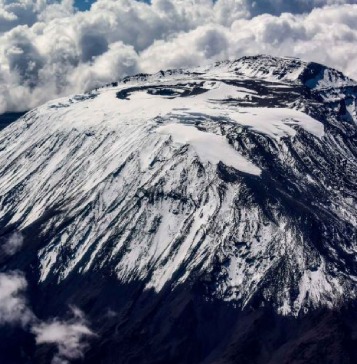- Moshi, Tanzania
- info@africafantasy.com
7-Day Lemosho Route
$2,648/Pax
Mountain Kilimanjaro
The 7-day Lemosho Route is a scenic and relatively less crowded trail to the summit of Mount Kilimanjaro. Known for its pristine beauty, it starts on the western side of the mountain and crosses the lush rainforest, vast moorlands, and dramatic alpine deserts. This route is ideal for trekkers seeking an adventurous journey with a high chance of summit success due to its gradual
altitude gain. While the 7-day option is slightly faster than the 8-day itinerary, it still offers good acclimatization opportunities.
Price: $2,648
Duration: 7
Type: Mt Climbing
Age: 18-80

4.7
What’s Included
- Professional guides, porters, and cooks with extensive Kilimanjaro experience.
- All Kilimanjaro park fees, camping fees, and rescue fees.
- High-quality camping equipment, including private tents and sleeping mattresses.
- All meals during the trek (breakfast, lunch, and dinner).
- Transportation to and from Londorossi Gate.
- Two nights of accommodation in Moshi (before and after the trek).
- Emergency oxygen cylinder for altitude sickness.
- First aid kit and health monitoring with a pulse oximeter.
What’s Excluded
- International and domestic flights
- Travel insurance
- Tanzania visa fees.
- Personal trekking gear (e.g., sleeping bags, trekking poles, and warm clothing).
- Snacks, drinks, and personal expenses.
- Tips for guides, porters, and cooks
- Optional accommodation upgrades in Moshi.
- Costs for additional acclimatization days or side trips.
Join us for a journey that blends adventure, culture, and tranquility, crafted with care and passion for discovery. Tripzo exclusive expedition invites you to experience the world’s timeless wonders in a way that’s both unique and unforgettable.
Tour Plan
Day 1: Londorossi Gate to Mti Mkubwa (Big Tree Camp)
The trek begins with registration at Londorossi Gate, followed by a drive to the starting point. The trail ascends gently through a dense rainforest, home to unique flora and fauna. The day ends at Mti Mkubwa Camp (2,800 meters).
Day 2: Mti Mkubwa to Shira Camp 1
Leaving the rainforest, the trail climbs steeply through the moorland zone. Trekkers cross grassy hills and volcanic rock formations, arriving at Shira Camp 1 (3,500 meters), with expansive views of the Shira Plateau.
Day 3: Shira Camp 1 to Shira Camp 2
This day offers a more gradual ascent as trekkers traverse the Shira Plateau, one of Kilimanjaro’s most scenic areas. The trek to Shira Camp 2 (3,850 meters) is relatively short, allowing for acclimatization and relaxation with stunning views of Kibo Peak.
Day 4: Shira Camp 2 to Barranco Camp via Lava Tower
The trail ascends to Lava Tower (4,600 meters), providing a critical acclimatization experience. After spending some time at Lava Tower, trekkers descend to Barranco Camp (3,900 meters). The “climb high, sleep low” approach enhances acclimatization and prepares you for the summit.
Day 5: Barranco Camp to Karanga Camp
The day starts with the iconic Barranco Wall, requiring light scrambling but rewarding trekkers with incredible views. The trail continues to Karanga Camp (3,995 meters), passing through unique landscapes of alpine desert.
Day 6: Karanga Camp to Barafu Camp
Trekkers make their way to Barafu Camp (4,673 meters), the base camp for the summit. The day is relatively short, allowing time for rest and preparation for the midnight summit attempt.
Day 7: Barafu Camp to Uhuru Peak and descend to Mweka Camp
The final push begins at midnight. Climbers ascend to Stella Point (5,745 meters) on the crater rim and continue to Uhuru Peak (5,895 meters), the highest point in Africa. After celebrating the achievement, trekkers descend back to Barafu Camp for a short rest and continue down to Mweka Camp (3,068 meters).
Tour Location
Reviews
FAQ’s
Frequently Asked Qeustion
1. How fit do I need to be to climb Kilimanjaro?
You don’t need technical climbing skills, but good physical fitness is essential. Training with cardio workouts, strength exercises, and hiking on uneven terrain will help improve endurance.
2. What is the best route to climb Kilimanjaro?
The most recommended routes are:
- Machame Route (6–7 days) – Scenic and popular.
- Lemosho Route (7–8 days) – Best for acclimatization.
- Marangu Route (5–6 days) – Has hut accommodations instead of tents.
- Rongai Route (6–7 days) – Less crowded and starts from the north side.
3. How do I avoid altitude sickness?
- Choose a longer route for better acclimatization.
- Follow the “climb high, sleep low” principle.
- Stay hydrated and maintain a steady pace.
- Consider taking Diamox (consult a doctor first).
4. What is included in a Kilimanjaro climb package?
Most packages include:
✅ Park fees & permits
✅ Professional guides & porters
✅ Accommodation (tents or huts)
✅ Meals & drinking water
✅ Safety equipment (oxygen, first aid kit)
5. When is the best time to climb Kilimanjaro?
- January–March: Cold but clear with fewer climbers.
- June–October: Best weather conditions but more crowded.
- April–May & November: Rainy season, making trails muddy and challenging.
We’re excited to connect and collaborate with you on innovative strategies that will shape the future of your brand.
- Newsletter
